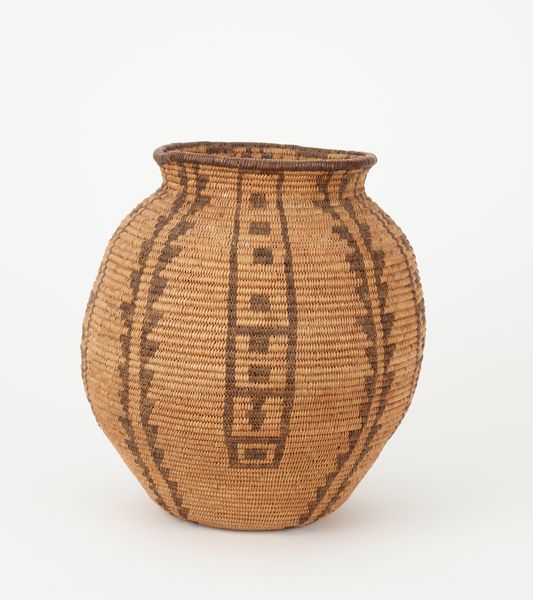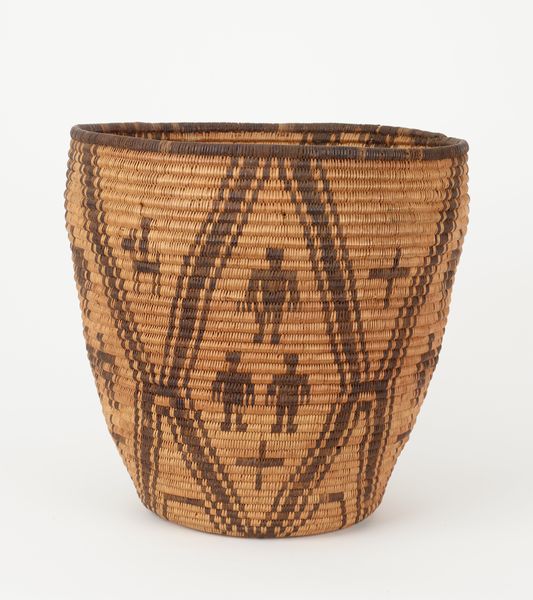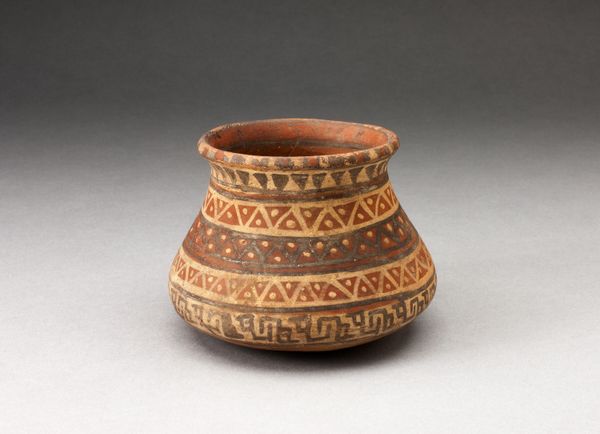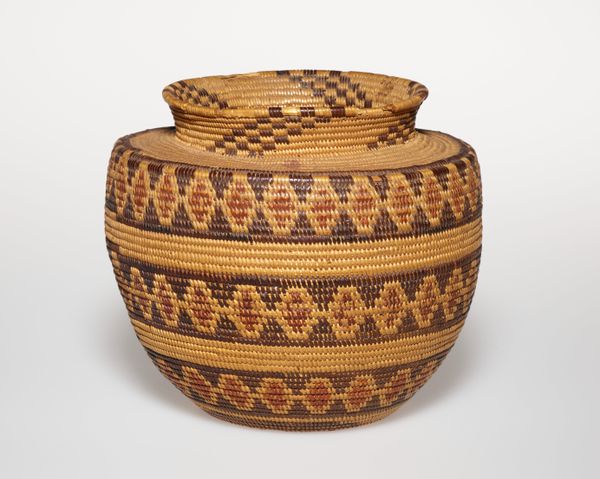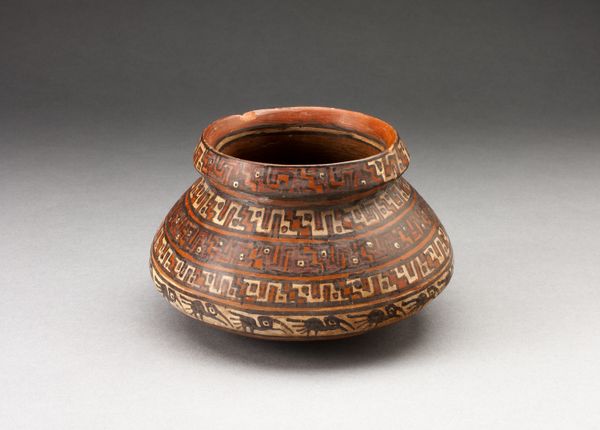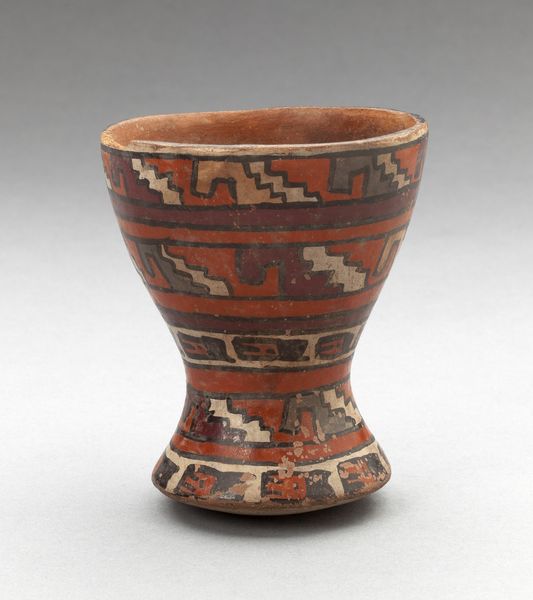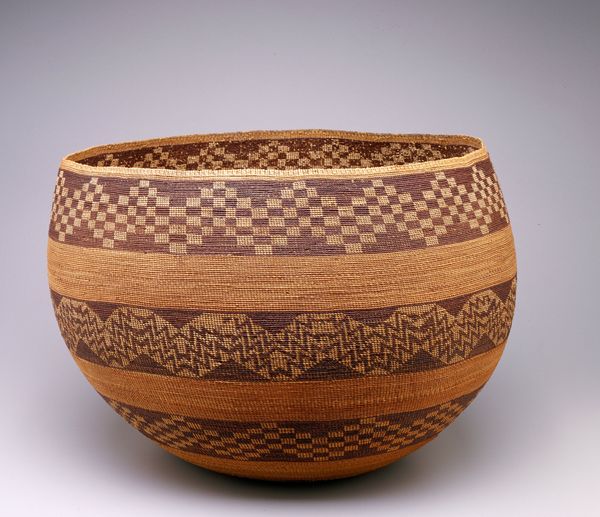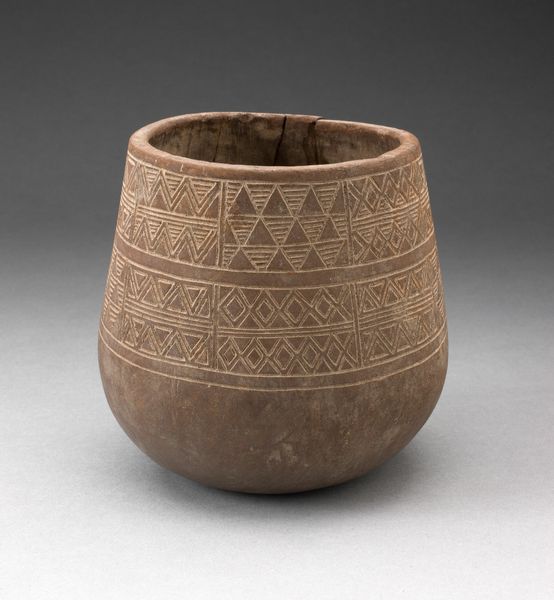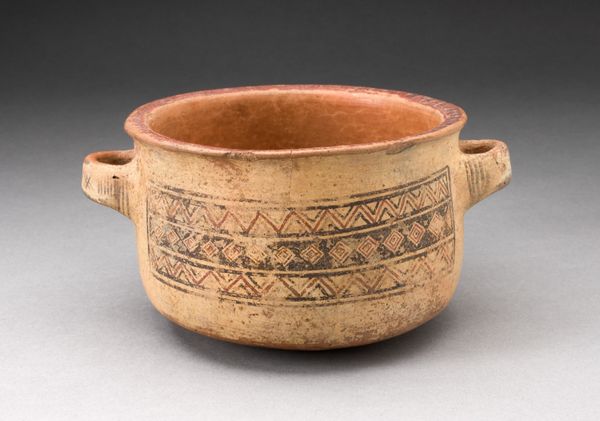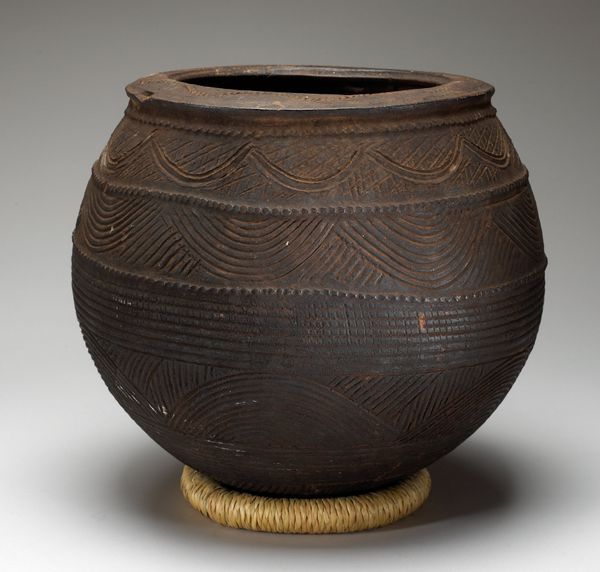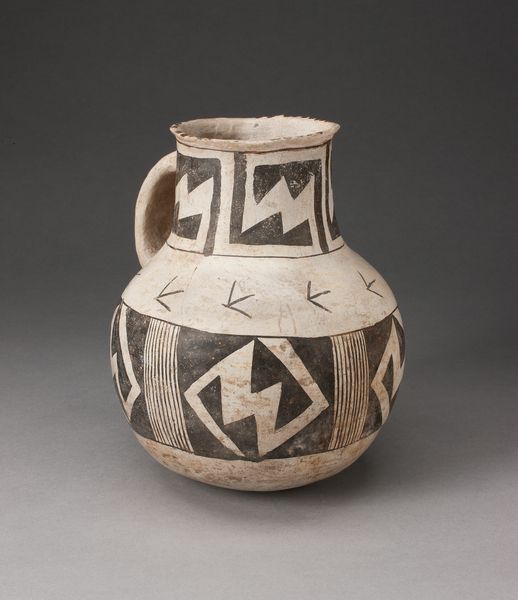
fibre-art, weaving, textile
#
fibre-art
#
pottery
#
weaving
#
textile
#
stoneware
#
geometric
#
earthenware
#
indigenous-americas
Dimensions: 9 1/2 × 9 13/16 × 9 13/16 in. (24.13 × 24.92 × 24.92 cm)
Copyright: Public Domain
Curator: Here we have a "Basket" by an Indé artist. While the exact date is unknown, it resides here at the Minneapolis Institute of Art as a significant example of Indigenous weaving. Editor: My immediate impression is one of subtle solemnity. The earthy tones and the repeated figures evoke a ritualistic quality. There’s a weightiness in its presence despite the delicate weaving. Curator: Indeed. Observe the coiling technique. The tight, meticulous construction lends the piece structural integrity, while the contrast between the light and dark fibers creates defined patterns, most prominently the human figures arrayed around its circumference. Editor: These figures demand interpretation. Given that Indé people, also known as Apaches, traditionally maintained close relationships to the land and spiritual beliefs, these human forms, integrated through the medium of the Basket, likely denote social organization, storytelling, or religious beliefs tied to cosmology. How do we view them beyond simple representation? Curator: Focusing on their presentation—minimalist in nature—I suggest that, despite their symbolic possibility, the arrangement draws our attention toward form. The geometry and structure, not the anecdotal interpretation, is the genesis of the meaning. Editor: I must disagree; divorcing cultural artifacts from their originating matrix often strips the work of its fundamental purpose. What stories, memories, and even struggles does this piece transmit? For Indé communities, weaving isn't just craft, but also embodied knowledge, connecting generations. To ignore this is to overlook its deeper resonances. Curator: But consider the interplay between the overall spherical form and the vertical emphasis given to each abstracted human shape. It generates dynamism from what could be considered otherwise mundane material. It exemplifies, even now, sophistication of design—an achievement divorced from social significance. Editor: The Basket offers us then a complex dialectic. How does the tension between form and function operate within social and historical landscapes? Can an object be aesthetically studied apart from the human stories it carries, especially given its origins? These are challenging yet necessary paths for interpretation. Curator: Precisely! There’s an inherent elegance, irrespective of its utility, that elevates it beyond simple craft. Editor: Yes, indeed! Perhaps what we discover here together, finally, are how both views can intersect to enrich our viewing, connecting artistry with profound sociality.
Comments
No comments
Be the first to comment and join the conversation on the ultimate creative platform.
